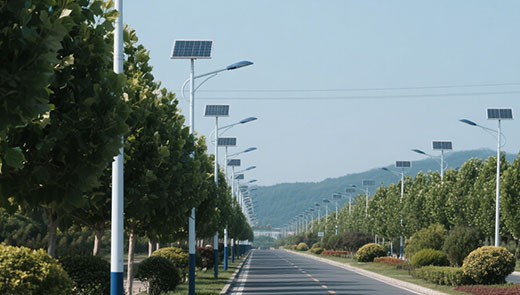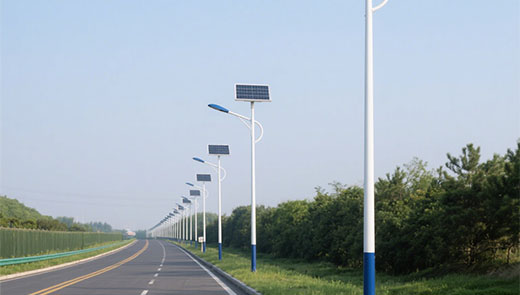Illuminating the Path: The Evolution of Solar Road Studs
Aug 08, 2024
Solar road studs, a modern marvel in road safety, have transformed the way we illuminate our highways, streets, and pathways. These self-sustaining lights are not only energy-efficient but also contribute significantly to reducing accidents and guiding drivers in low-visibility conditions. However, to appreciate their current utility, it’s essential to understand the journey of their development.
This simple yet revolutionary invention significantly improved road safety and was widely adopted across the world. However, traditional cat’s eyes had limitations, particularly in extreme weather conditions where visibility is severely compromised, and their passive nature meant they relied on external light sources.
Solar panels had already begun to appear in various applications by the late 20th century, from calculators to street lights. The idea of integrating solar power with road studs emerged as a natural progression. Early experiments involved fitting led road studs with small solar panels and LEDs, making them self-sufficient in energy and capable of providing light independently of car headlights.
Over time, advances in photovoltaic technology, battery storage, and LED efficiency led to more reliable and durable solar road studs. Modern iterations are designed to function optimally even in challenging weather conditions, with enhanced waterproofing, temperature resistance, and longer battery life. They are also equipped with smart features, such as sensors to adjust brightness based on ambient light conditions or to flash when vehicles approach.
Governments and road safety organizations began to take notice of these benefits, leading to widespread adoption in many parts of the world. Solar road stud lights are now a common feature on highways, pedestrian crossings, bike lanes, and even airport runways. They are particularly valued in areas where street lighting is not feasible, such as rural roads or remote areas.
From their humble beginnings as reflective markers to the sophisticated solar-powered devices we see today,solar road stud lights have come a long way. Solar road studs are a testament to how innovation in energy technology can lead to safer, more sustainable infrastructure. As technology continues to evolve, we can expect solar road studs to play an even more significant role in the future of road safety and smart city developments.
Origins of Road Studs: A Brief Historical Context
The concept of road studs isn't entirely new; it dates back to the 1930s when Percy Shaw, a British inventor, designed the first reflective road studs—commonly known as "cat's eyes." Shaw's invention was inspired by a near-miss on a foggy road, where he realized that traditional road markings were ineffective in poor visibility. His solution was a device that used reflective materials to bounce back the light from car headlights, providing a clear path for drivers at night or in fog.This simple yet revolutionary invention significantly improved road safety and was widely adopted across the world. However, traditional cat’s eyes had limitations, particularly in extreme weather conditions where visibility is severely compromised, and their passive nature meant they relied on external light sources.
The Rise of Solar Technology
As technology progressed, the need for more active and reliable road illumination became apparent, especially with the global push towards sustainable and renewable energy solutions. The advent of solar technology provided the perfect opportunity to revolutionize the traditional road stud.Solar panels had already begun to appear in various applications by the late 20th century, from calculators to street lights. The idea of integrating solar power with road studs emerged as a natural progression. Early experiments involved fitting led road studs with small solar panels and LEDs, making them self-sufficient in energy and capable of providing light independently of car headlights.
The Development and Adoption of Solar Road Studs
The first generation of solar road studs were relatively simple, using solar panels to charge internal batteries during the day, which would then power LEDs at night. These early models proved effective in areas with consistent sunlight, but issues arose in regions with less reliable weather patterns, where cloudy days could reduce their effectiveness.Over time, advances in photovoltaic technology, battery storage, and LED efficiency led to more reliable and durable solar road studs. Modern iterations are designed to function optimally even in challenging weather conditions, with enhanced waterproofing, temperature resistance, and longer battery life. They are also equipped with smart features, such as sensors to adjust brightness based on ambient light conditions or to flash when vehicles approach.
Governments and road safety organizations began to take notice of these benefits, leading to widespread adoption in many parts of the world. Solar road stud lights are now a common feature on highways, pedestrian crossings, bike lanes, and even airport runways. They are particularly valued in areas where street lighting is not feasible, such as rural roads or remote areas.
Benefits and Future Prospects
Solar road studs offer several key advantages:- Energy Efficiency: They harness solar power, reducing reliance on conventional electricity and cutting down on energy costs.
- Enhanced Safety: The bright, consistent light provided by LEDs improves visibility in all conditions, reducing the risk of accidents.
- Environmental Impact: As they use renewable energy, they contribute to reducing carbon footprints.

.jpg)
.jpg)
.jpg)



